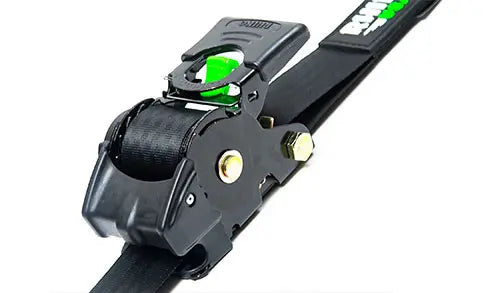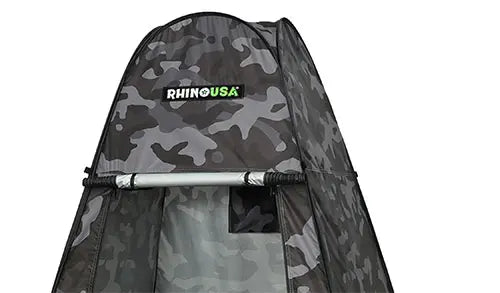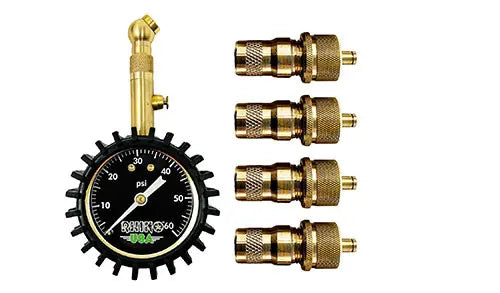We've all been there - camping in the great outdoors, enjoying the beauty of nature, when suddenly you realize you need to use the bathroom. As you scan your surroundings, the absence of a nearby restroom becomes apparent, and panic sets in. Fear not! Knowing how to handle bathroom needs while camping can make your experience more enjoyable and eco-friendly.
One of the key aspects of going to the bathroom while camping is preparation. By being equipped with the right tools and knowledge, you can ensure a more comfortable and environmentally responsible experience. In this article, we'll discuss the essential steps involved in answering nature's call in the wild, covering methods, hygiene, and comfort solutions to help you stay confident and in control during your camping trips.
To begin, it's essential to familiarize yourself with the various methods of handling bathroom needs while camping. From digging a hole to using a portable toilet, there are several ways to dispose of waste effectively while protecting the environment. We'll also delve into personal hygiene practices and comfort solutions so you can maintain your well-being, even when modern conveniences are not available. Armed with this information, you'll be ready to tackle the challenges of using the bathroom in the great outdoors with ease and confidence. So, let's get started!
Preparation is Key
Before embarking on your camping adventure, it's essential to research your campsite. This involves determining the availability of toilets or restrooms as well as understanding the campsite's regulations on waste disposal. By knowing what to expect, you'll be better prepared for using the bathroom while camping.
Once you have gathered the necessary information on your campsite, it's time to gather essential supplies. Be sure to pack the following items:
-
Toilet paper: Opt for an environmentally friendly, biodegradable option if possible.
-
Hand sanitizer: This will help keep your hands clean and germ-free after using the bathroom.
-
Trowel or small shovel: Necessary for digging holes if there are no available toilet facilities.
-
Biodegradable bags or portable toilet systems: These can be particularly useful in locations with strict waste disposal regulations.
-
Outdoor pop-up privacy tent: a great addition for those who prefer a makeshift bathroom with some privacy.
By thoroughly preparing in advance for your camping trip, you'll be equipped to handle bathroom situations with ease and confidence. Remember to follow campsite regulations, practice proper hygiene, and leave no trace behind to help preserve the natural environment for everyone to enjoy.
Bathroom Methods in the Wild
Using Campsite Facilities: When using campsite toilets or outhouses, be respectful and considerate. Locate the facilities by checking your campsite map or asking the site manager. Ensure you close the doors securely to prevent unwanted visitors or odors. Maintain the cleanliness of shared facilities by disposing of waste properly and wiping down surfaces as needed.
Digging a Cat Hole: To dig a cat hole while camping, follow these steps:
- Choose a location that is at least 200 feet (70 steps) away from water sources, trails, and campsites.
- Use a trowel or a sturdy stick to dig a hole about 4 inches wide and 6 to 8 inches deep.
- Do your business in the hole.
- Cover your waste and the hole with the excavated soil, then pack it down gently with your foot to prevent wildlife from uncovering it.
- Pack out used toilet paper in a sealed bag or, if permitted, burn it in your campfire.
Portable Toilet Options: Those camping in areas without facilities might consider portable toilets and biodegradable bags. There are several types of portable toilets, such as bucket-style toilets and foldable models. When using a portable toilet, follow these guidelines:
- Set up the toilet in a private, designated area, keeping the recommended 200 feet distance from water sources, trails, and campsites.
- Place a biodegradable bag or liner in the toilet container to collect waste.
- After use, seal the bag securely and dispose of it in a designated trash bin or as prescribed by local guidelines or regulations.
By employing these bathroom methods in the wild, you can maintain cleanliness and protect the environment while enjoying your camping experience.
Creating a Makeshift Outdoor Bathroom
When camping, it's important to have a comfortable and private place to use the bathroom. One popular solution is to use an outdoor pop-up privacy tent. These tents offer several benefits, such as privacy, comfort, and ease of setup. To set up the tent, find a suitable location away from your camping area and follow the manufacturer's instructions. Make sure it is secure and provides enough space for your needs. To keep the tent clean and ventilated, consider adding a portable toilet or use a wag bag to collect waste.
Here are some tips for using a pop-up privacy tent:
-
Choose a spot: Find a suitable location away from your camping area, preferably at least 200 feet from water sources to minimize contamination.
-
Setup: Follow the manufacturer's instructions for setting up the tent. Ensure it is secure and provides enough space for your needs.
-
Ventilation: Keep the tent well-ventilated by opening the windows or vents provided, especially if you're using a portable toilet inside.
-
Cleanliness: Clean the area regularly, dispose of waste appropriately, and use eco-friendly cleaning products to minimize environmental impact.
If a pop-up privacy tent is not available, you can still create a makeshift outdoor bathroom using tarps or other materials. Here are some suggestions for creating seclusion and maintaining privacy:
-
Use tarps: Hang tarps or other large pieces of fabric between trees or poles to create walls. Secure them with ropes, bungee cords, or stakes.
-
Natural barriers: Consider using natural features, such as bushes or rocks, as part of your makeshift bathroom area.
-
Plan for waste disposal: Be prepared to collect and dispose of your waste properly. This could involve digging a cathole, using a portable toilet, or utilizing a wag bag system.
-
Hygiene: Always have hand sanitizer or soap and water available for hand washing. Pack out used toilet paper and personal hygiene products in airtight bags.
By following these tips, you can create a comfortable and private makeshift outdoor bathroom while camping. Remember to respect the environment, practice good hygiene, and leave the area clean for future campers.
Maintaining Hygiene
Maintaining personal hygiene while camping is crucial. Not only does it impact your comfort, but it also has significant effects on the environment and fellow campers. In this section, you'll learn about personal hygiene practices as well as environmental considerations when using the bathroom while camping.
Personal Hygiene Practices
Hand washing is essential to prevent the spread of germs and bacteria. Make sure to wash your hands frequently with biodegradable soap and water, especially after using the bathroom, before handling food, and after touching shared surfaces. If water and soap are not available, hand sanitizer with at least 60% alcohol content is an effective alternative.
In addition to hand hygiene, consider using biodegradable wet wipes for cleaning your body. They can be used to freshen up your face, underarms, and other areas needing attention. Make sure the wet wipes are specifically designed for camping, as they are more likely to be eco-friendly.
Environmental Considerations
Adhering to the Leave No Trace principle is crucial when camping to minimize your impact on the environment. The proper disposal of waste and toilet paper is vital to help protect nature and wildlife from contamination.
Here are some guidelines to reduce your environmental impact:
-
Dig a cathole that's at least 6-8 inches deep and 200 feet away from water sources, trails, and campsites for human waste and toilet paper disposal.
-
Pack out soiled wet wipes or feminine hygiene products in a sealed plastic bag, as they do not decompose quickly.
-
Use biodegradable soap when washing your hands, clothes, or body.
Understanding the environmental consequences of improper waste disposal will help you make informed decisions about your actions while camping. Adopting these practices will support a cleaner, healthier environment for everyone to enjoy.
Tips and Tricks for a Better Experience
Enhancing Comfort and Privacy
When using the bathroom while camping, setting up a comfortable bathroom area is essential for a pleasant experience. One option is to use an outdoor pop-up privacy tent, which can easily be set up and taken down as needed. This provides a private and convenient space for you to use the bathroom. Additionally, consider choosing less crowded times and locations for bathroom breaks to increase privacy and comfort.
Safety Tips
Being aware of and cautious about wildlife in the area is paramount to your safety during bathroom breaks while camping. Some animals are attracted to human waste, so be vigilant about the surroundings before settling in for a bathroom break. Moreover, employing a buddy system for nighttime bathroom trips can ensure safety and ease of navigation, especially in unfamiliar territory.
Adapting to Various Environments
Camping terrains can vary, from deserts to forests to mountains. Adapting your bathroom habits to the specific environment can make the experience more comfortable and hygienic.
-
Deserts: In dry, sandy areas, you might consider using wag bags or portable toilets. These devices allow you to capture and seal away waste, preventing contamination of the delicate ecosystem.
-
Forests: In wooded environments, the "cat hole" technique is commonly used. Dig a hole about 6-8 inches deep, do your business, and then cover it properly with soil. This method helps to minimize your impact on the environment.
-
Mountains: When camping in mountainous regions, be aware of the risks associated with disposing of waste near water sources. Make sure to dispose of your waste at least 200 feet away from any water source to prevent contamination.
By following these tips, you can ensure a safe, comfortable, and environmentally friendly bathroom experience while camping.
Conclusion
In this article, we've discussed the importance of preparation, various methods for using the bathroom, maintaining good hygiene, and finding comfort solutions while camping. By following these guidelines, you'll be well-equipped to handle your bathroom needs in the great outdoors.
Remember that with the right preparation, using the bathroom while camping can be a straightforward and stress-free experience. Whether you're utilizing a pre-dug cathole, a portable toilet, or a wag bag, choose a method that works best for your situation and comfort level. Don't forget to prioritize hygiene by packing essentials like toilet paper, hand sanitizer, and odor-proof bags.
Now that you're knowledgeable about this topic, feel free to share your own tips and experiences in the comments section to help fellow campers. Happy camping!

















